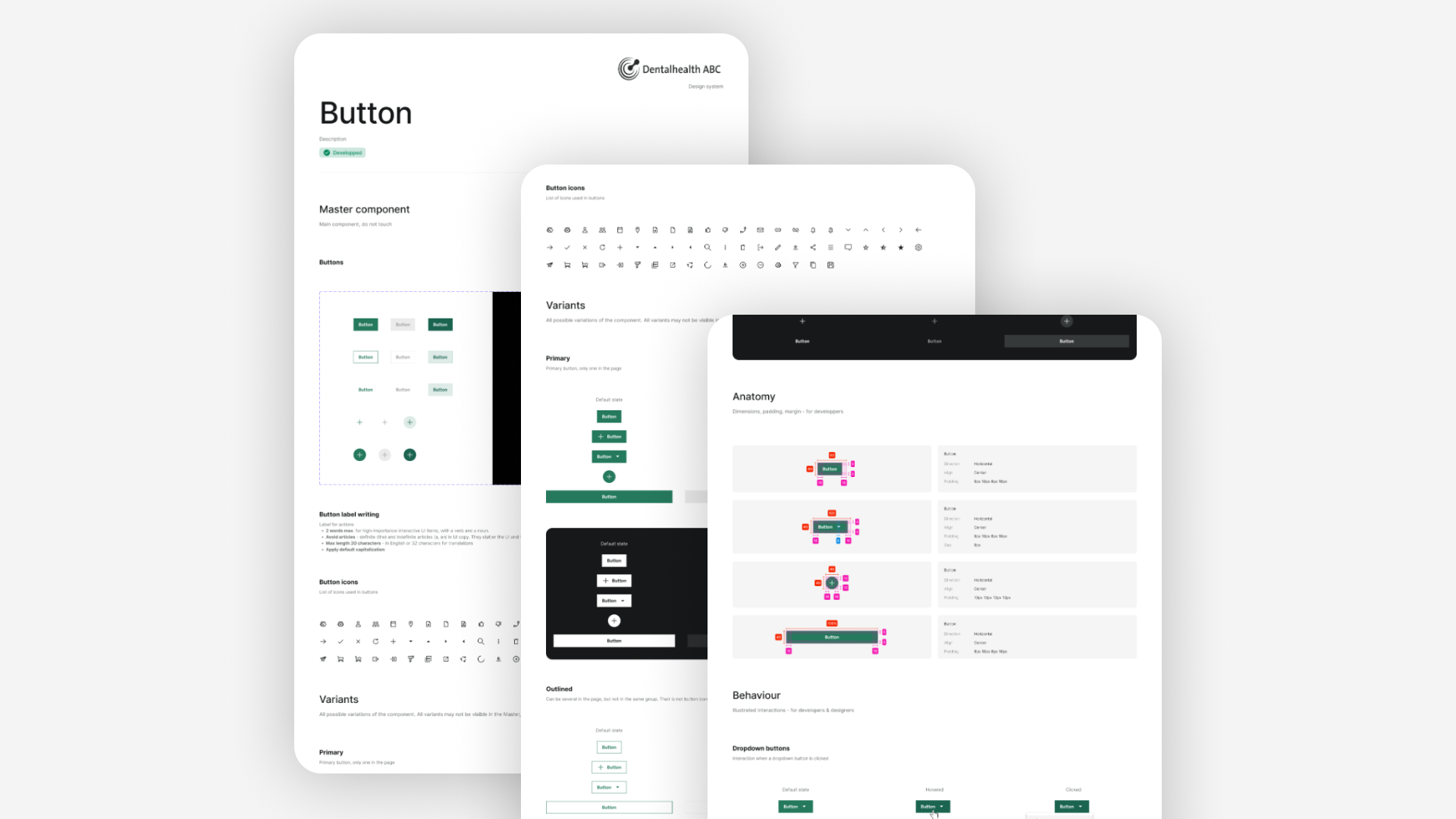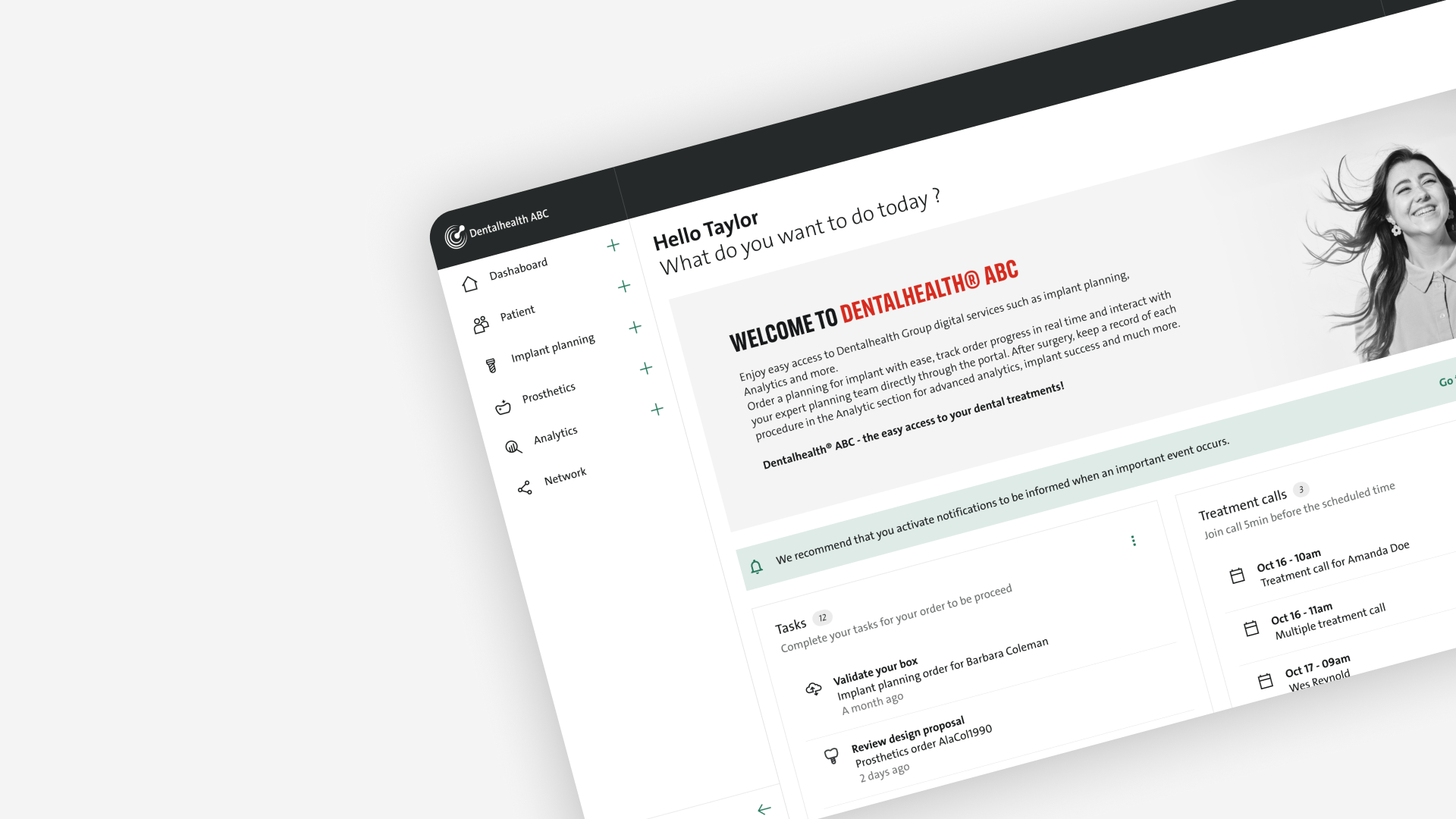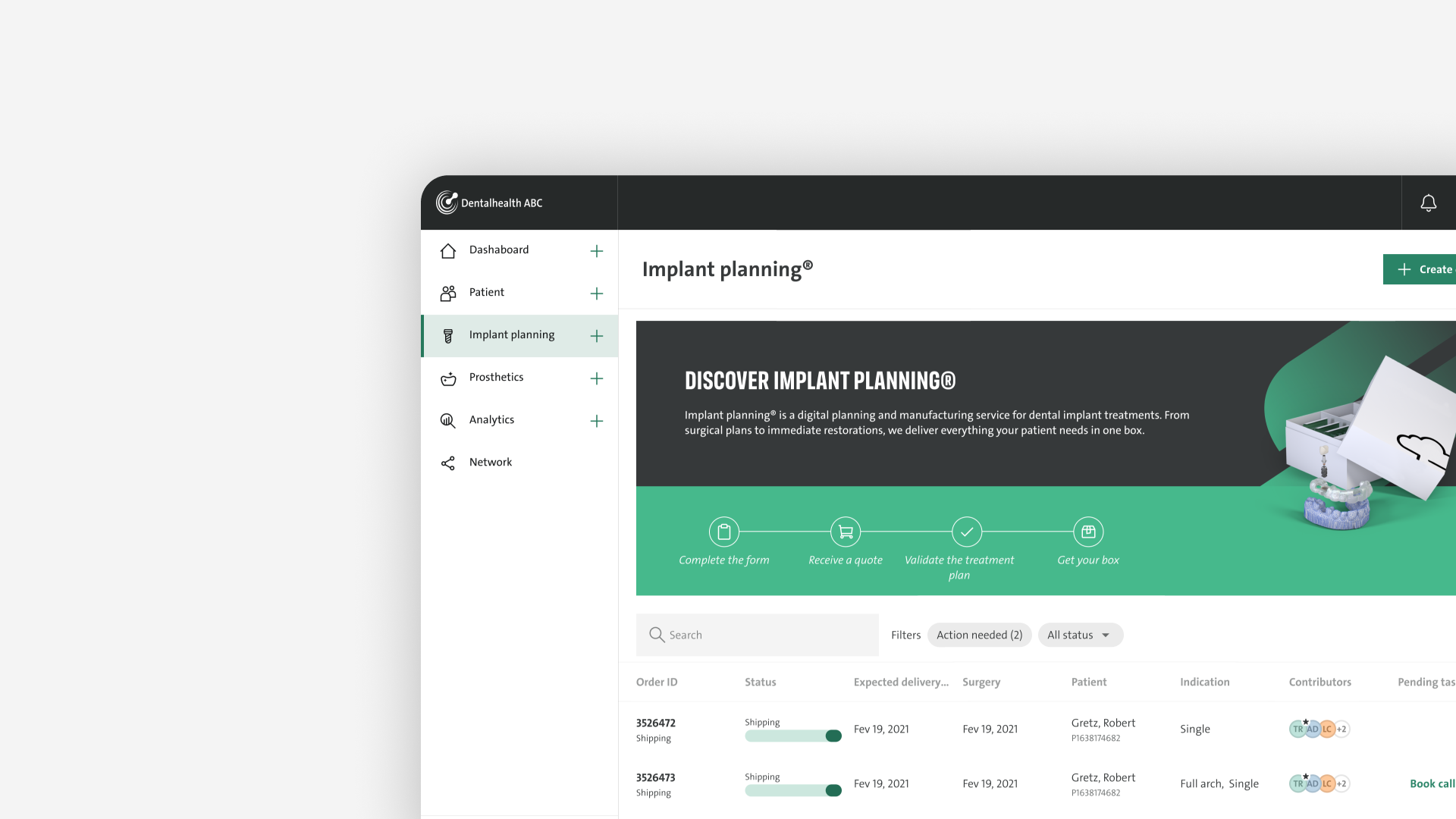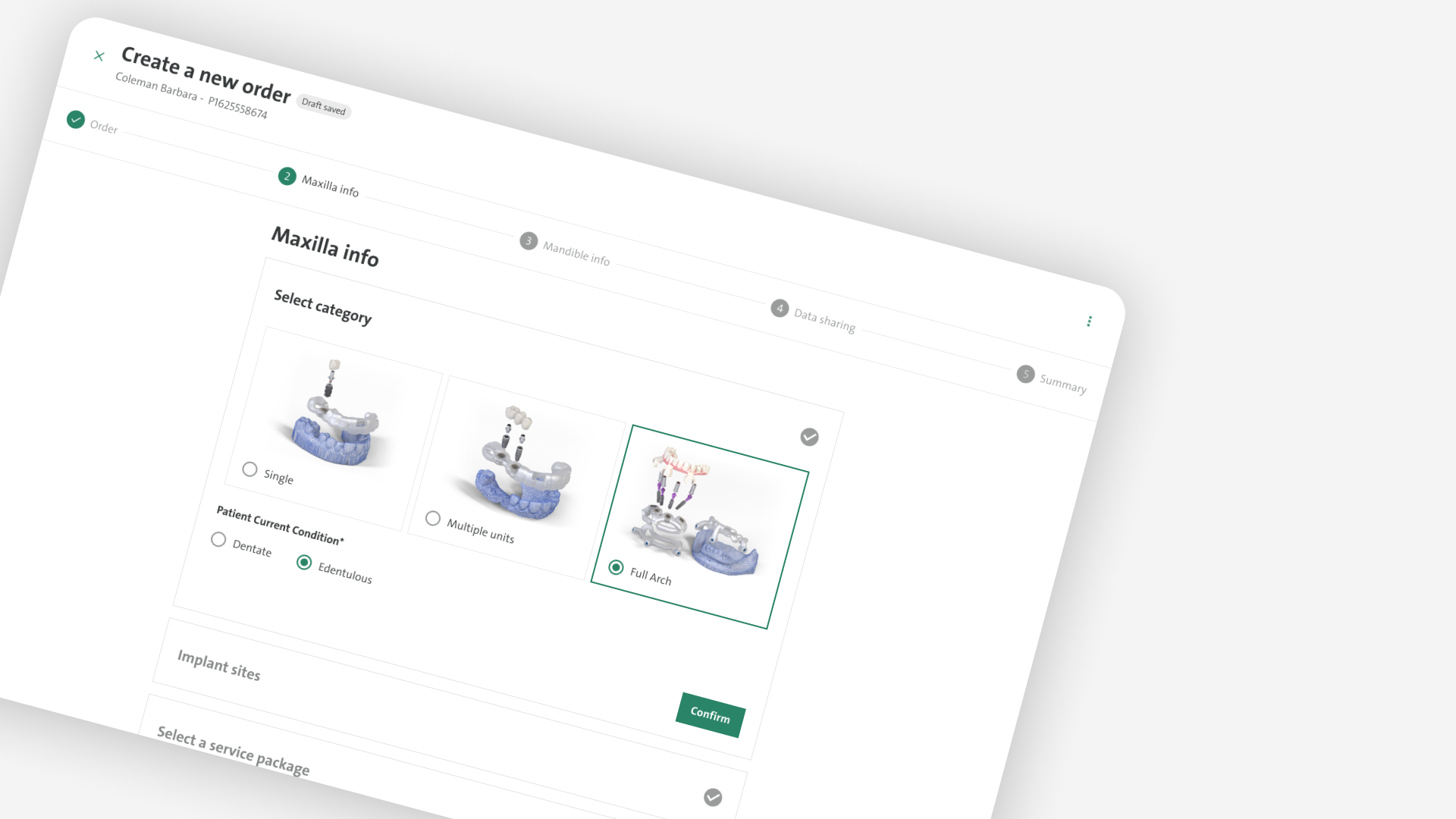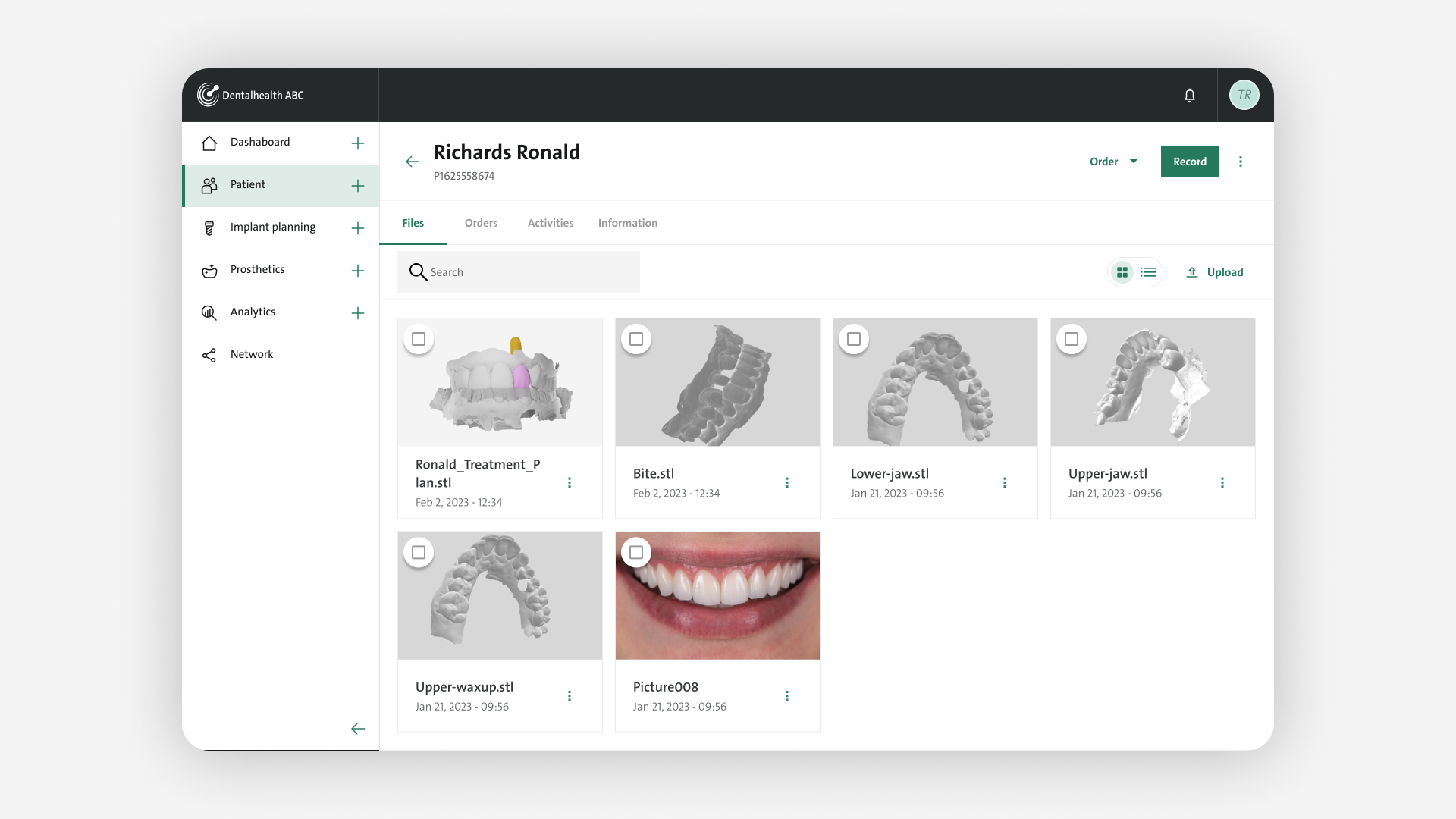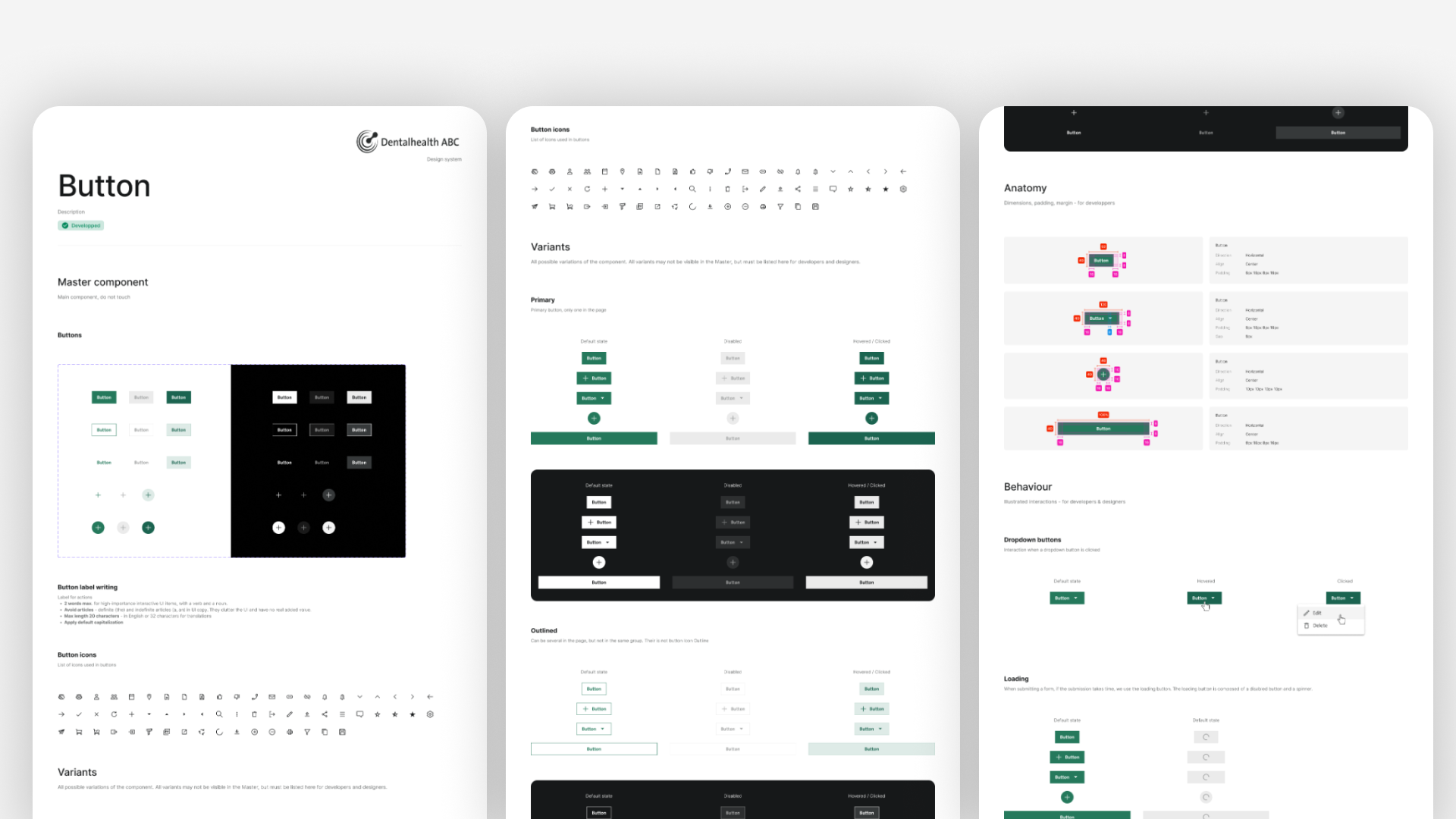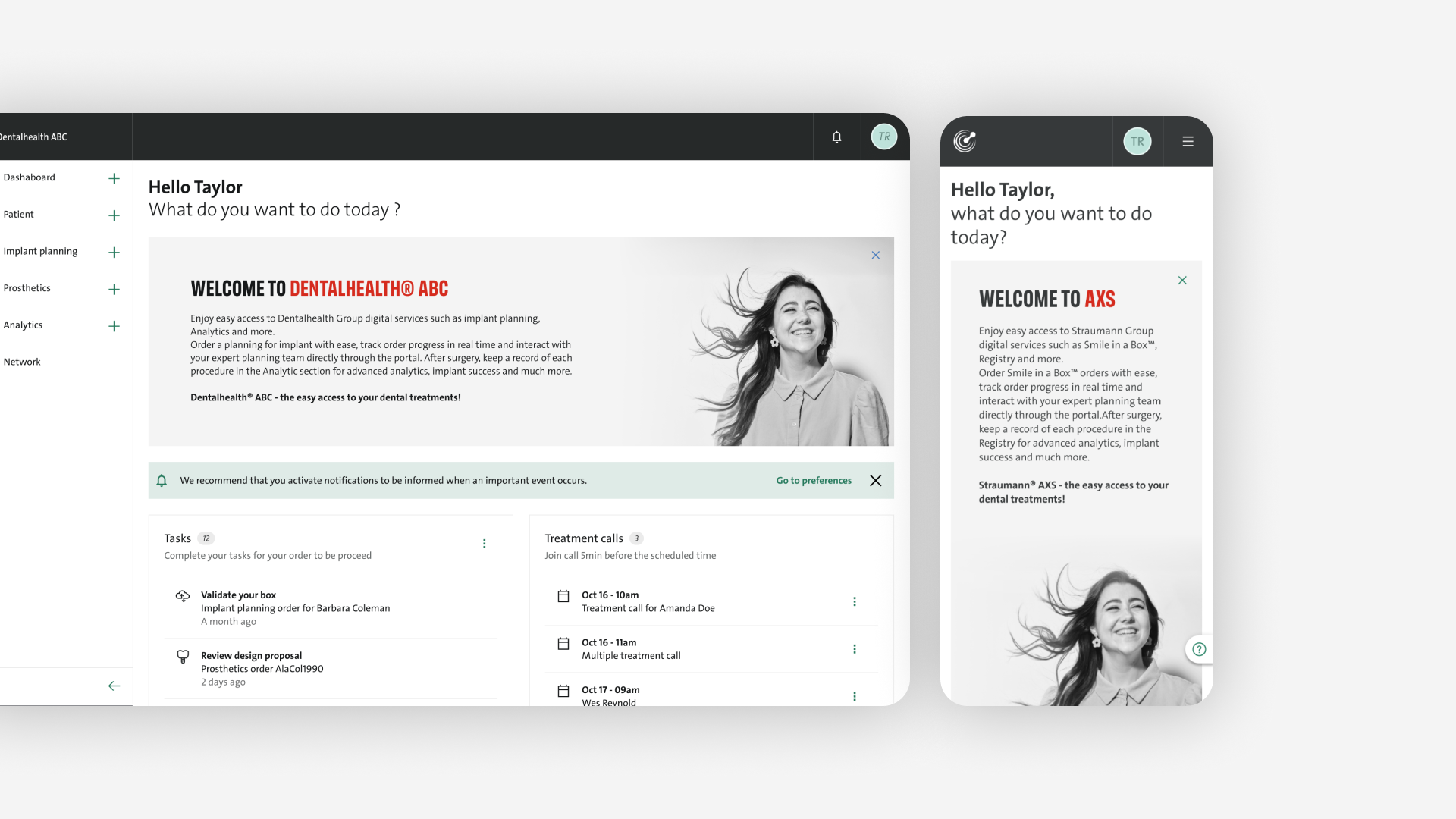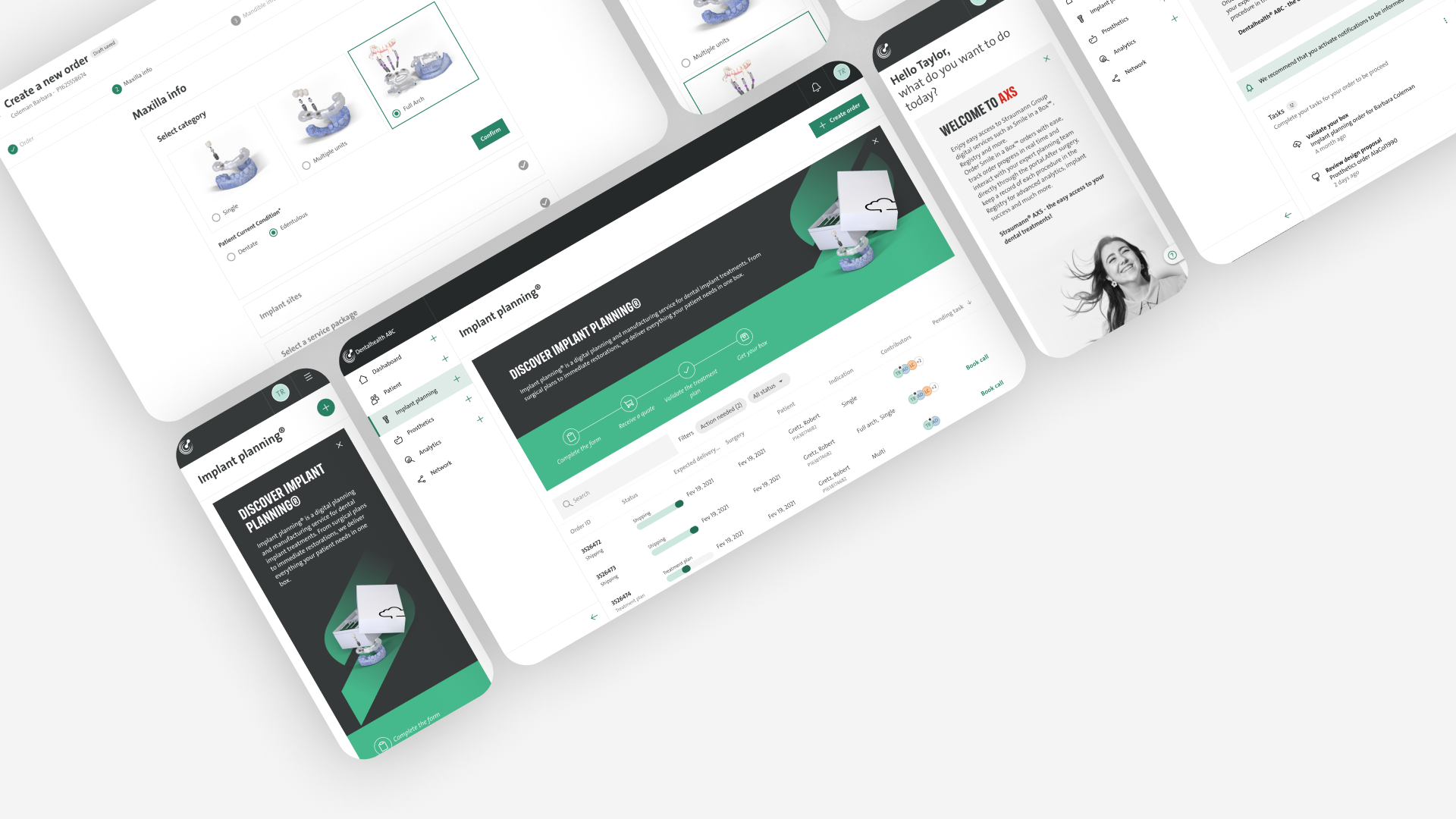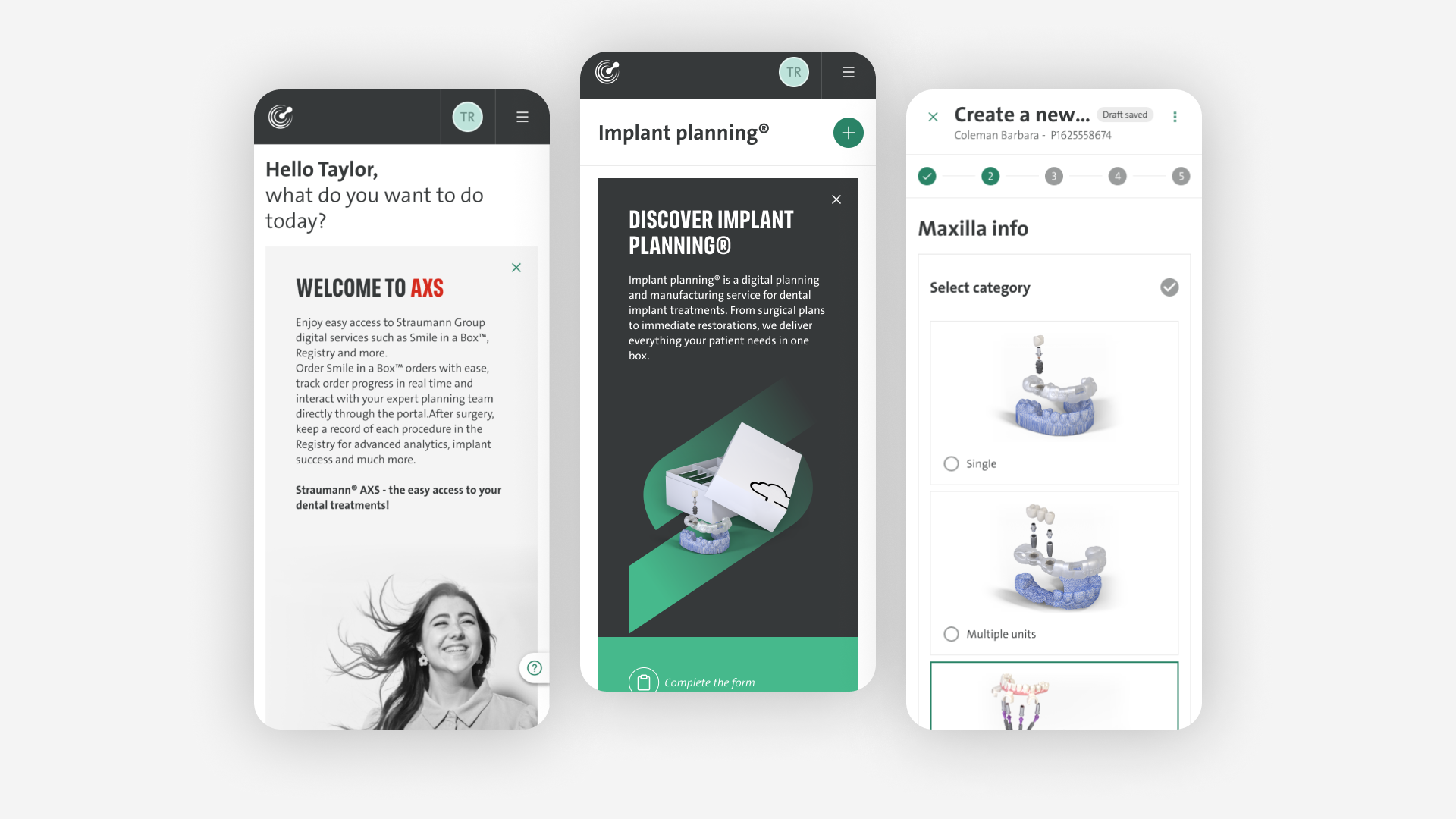Designing a workflow-oriented customer portal for a global leader in implant manufacturing
In the competitive landscape of healthcare technology, creating seamless workflows between physical and digital to enhance professionals' ways of working is becoming a critical need. Yet, this is often delayed by old and non-communicating systems.
For the past 2 years, I've been working on this fast-growing customer portal, aiming to integrate one by one all the group's digital services.
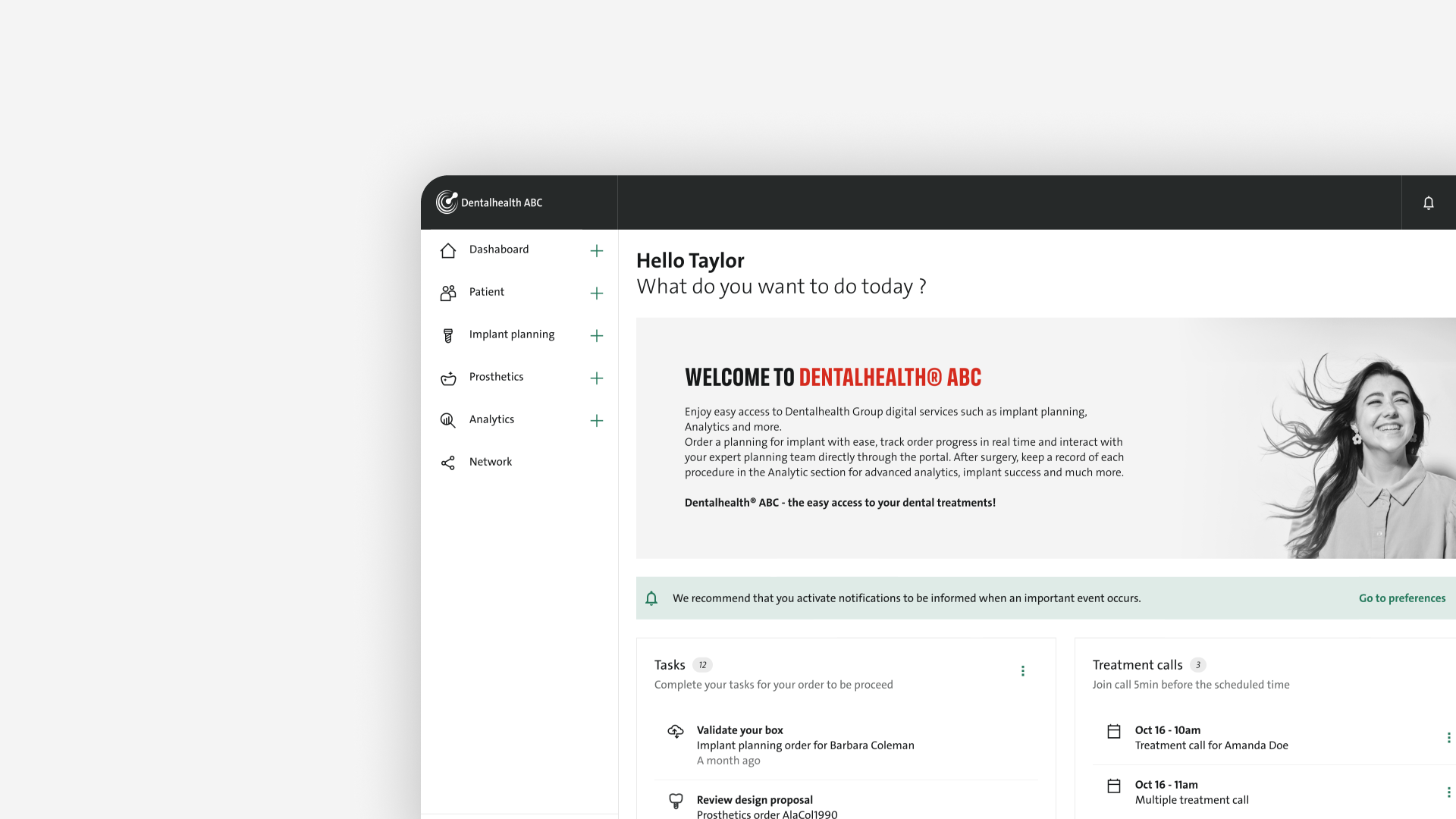
Design challenges
The portal should cater for two very different user groups—dental labs and clinicians—who have distinct needs and workflows. While dental lab technicians tend to think in terms of orders, materials, and logistics, clinicians will prioritize patient outcomes. Additionally, lab technicians tend to be more tech-savvy and proficient with digital tools, while dentists prefer to focus on patient care, with less time available to navigate complex interfaces.
Managing both user research and deadlinesWhile our customer was open to conduct user research, they also faced strict deadlines for releasing their services. Hard deadlines for the development of complexe solutions has lead us to be creatative on the way to gather user insights.
Integrating with complexe ecosystemsThe dental industry increasingly relies on a variety of digital tools, such as intraoral (IOS) scanners, CAD/CAM systems, and 3D modeling software for implants. Seamlessly integrating these tools into the B2B portal was essential for maintaining user workflows, data consistency, and reducing manual steps, yet was challenging on several aspects
Enforce platform consistency among scrum teamsThe project grew fast and we rapidely moved from 2 SCRUM teams to 8.The fast growing set up introduced the challenge of team coordination regarding the platform consistency. Coherence of services, information architecture and visual design can be mishandled if not supervised by a dedicated team.
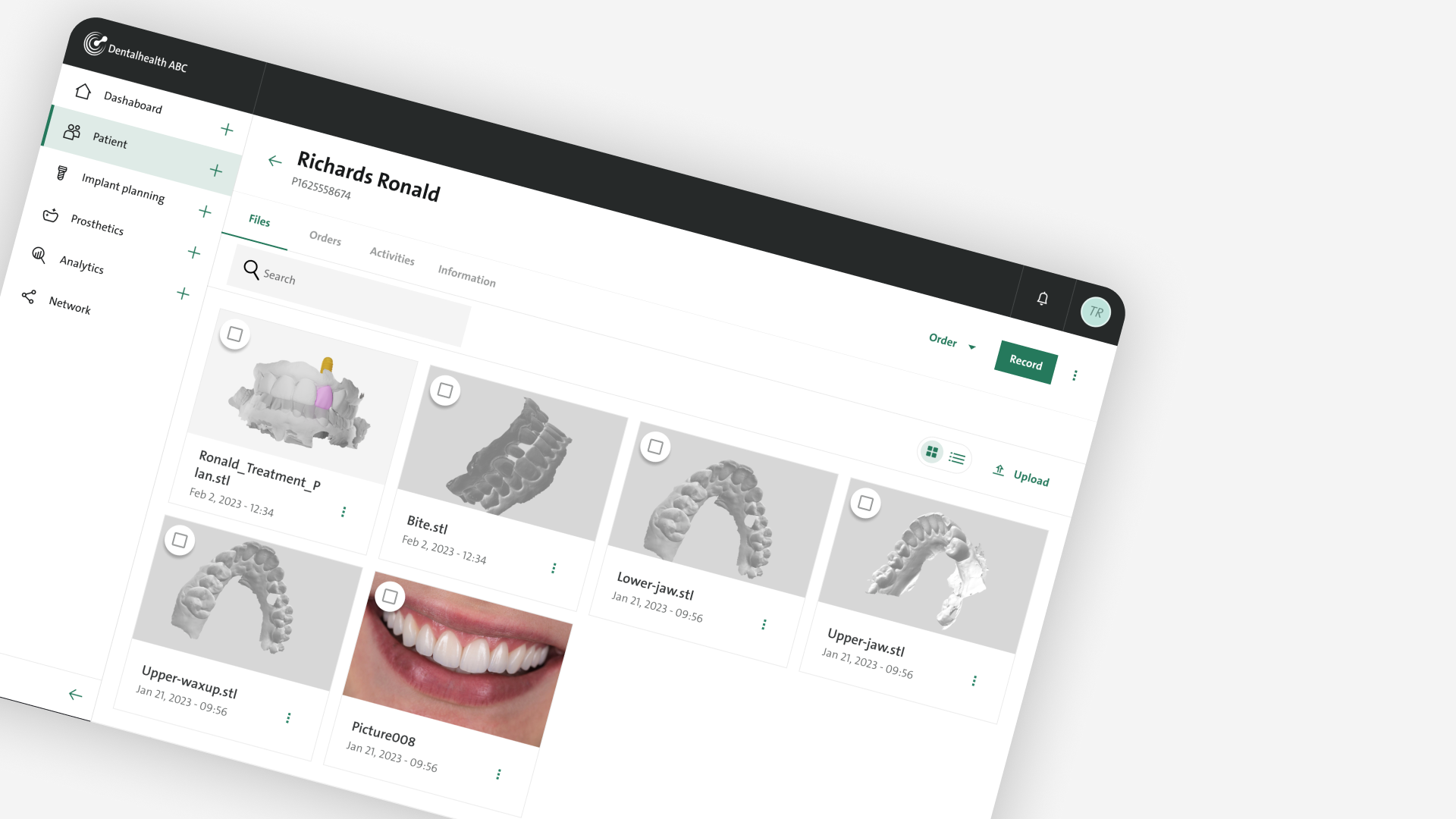
The initial platform was designed exclusively for clinicians. Yet, a shift in the roadmap prioritized a new service, meant mostly for dental laboratories. As the initial research was rather light, the team focused on tactical research before the launch of the service to production.
During those remote usability tests, we gather many insight, both strategic and tactical, allowing us to draft partial personas for upcoming services and understand our user's mind set. Dental laboratories are 3D engeeners, and are used to deal with complex digital tools. They seek for extreme efficiency rather than user-friendlyness. They require custom settings, shortcuts, connected application - any feature that can allow them to win precious minutes in their daily tasks. Basically the opposite of our initial users
Those precious insights allowed us to improve this new service and tailor it to our new users. We provided shortcuts in the ordering flow, custom settings for recurrent orders and connectivity to design software, in order to meet with their expetctations.
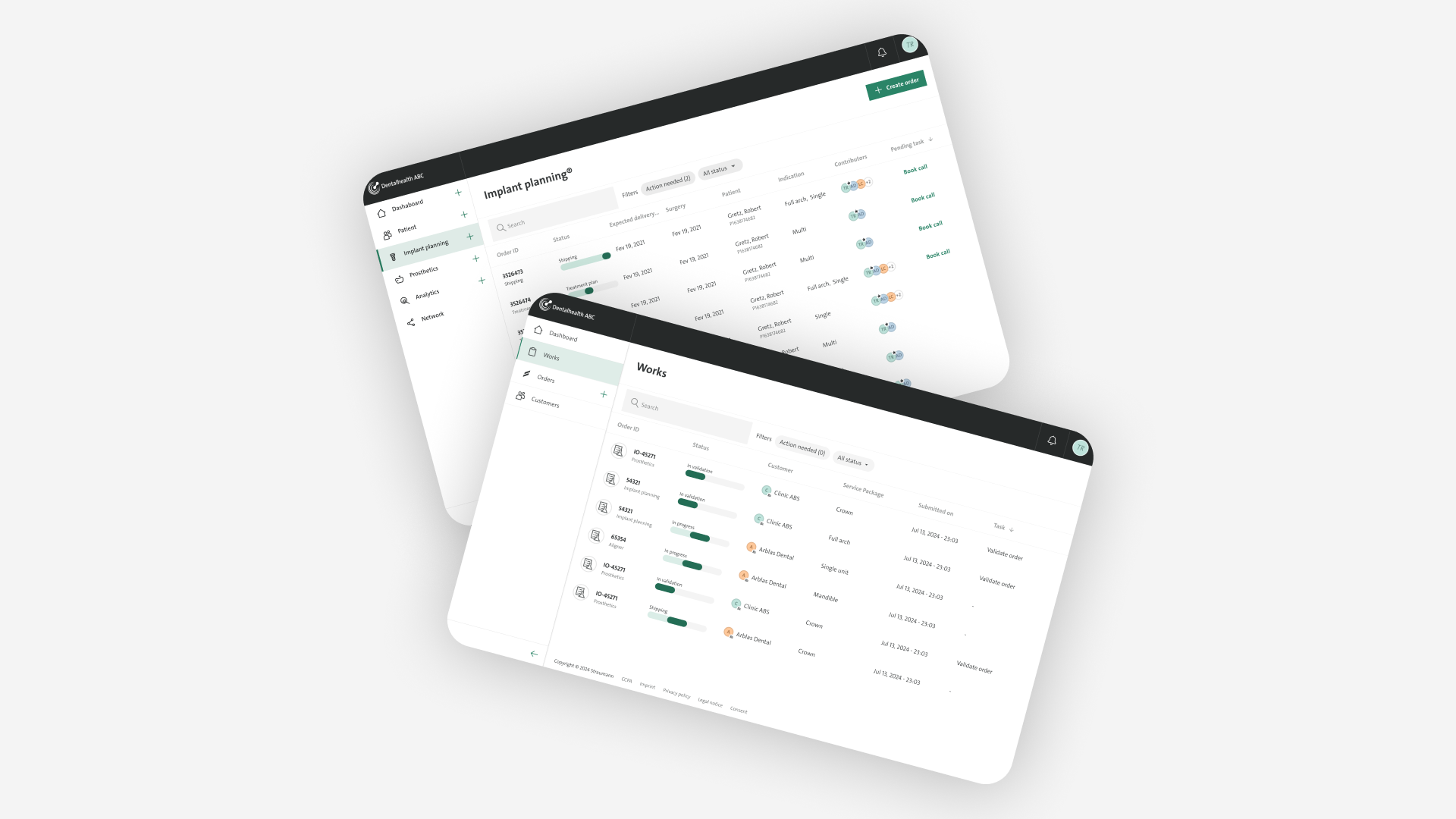
Managing both user research and deadlines
As the development team grew, more and more services were introduced to the platform. Our design team was not able to conduct systematically an extensive discovery research.
We shifted our mindset from the optiomal-double-diamond-process where the problem is surely defined, backed-up by dozens of interviews, to lean-UX framework : think-build-validate. Unlike the double diamond or generally design thinking, lean UX is more suitable for continuous development and iterative cyles . It relies on drafting the leanest possible version of the wished service or feature, and testing it as fast as possible.
This methodology is not tailored to gather a massive amount of strategic feedback, but the process is fast, efficient, and still validates (or invalidates) specific concepts. We were surprised to find along those test some very insightfull strategic insights on expected features or competitor ways of working.
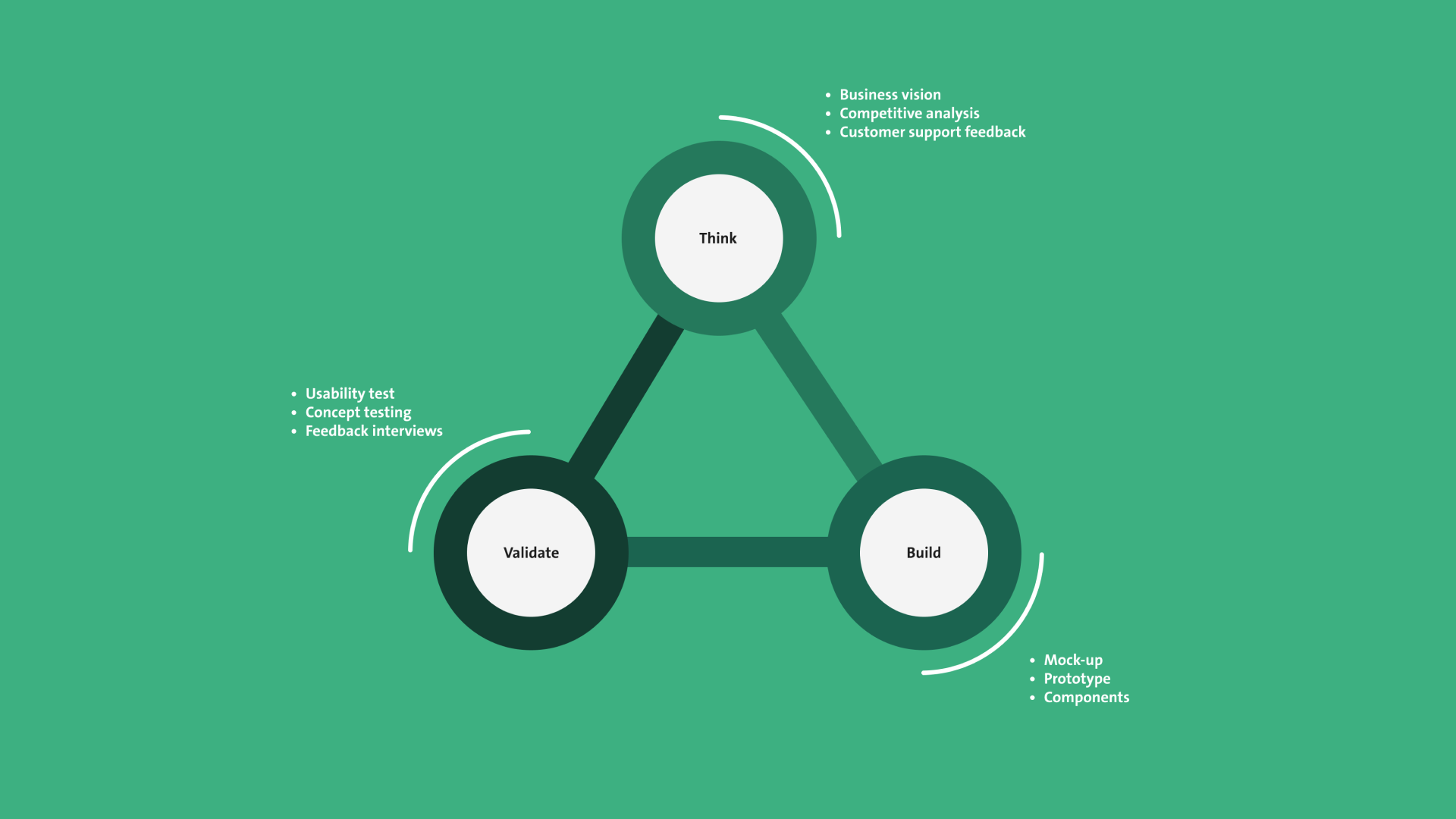
Integrating with complexe ecosystems
Dental industry relies more and more on digital tools like intraoral (IOS) scanners, CAD/CAM systems, and 3D modeling software. Groups leading the industry are the one mastering seamless workflows. Yet, those proprietary system won’t communicate to one another, and end-user are often stuck with a full suit of software from one single provider, to benifit from a minimum connection.
Addressing the outcome of a major usability test conducted on 6 dental technician users, we submitted to the client the idea of pairing the customer portal with one of the competitor API, leader in the IOS industry. If the business strategy dictated to the Group to build an ecosystem on it’s own (which was happening anyway, but was not mature enough), it was also important to cater for users need right now. It occured that currently, competitor's IOS scanner was the most used among our user base. This new connection allowed our users to send files seamlessly though the portal for any new order.
This integration enhanced workflow efficiency, minimized disruptions, and ensured to build a solid and growing user base, that will be brand’s advocates whenever the entire workflow is covered by the Group.
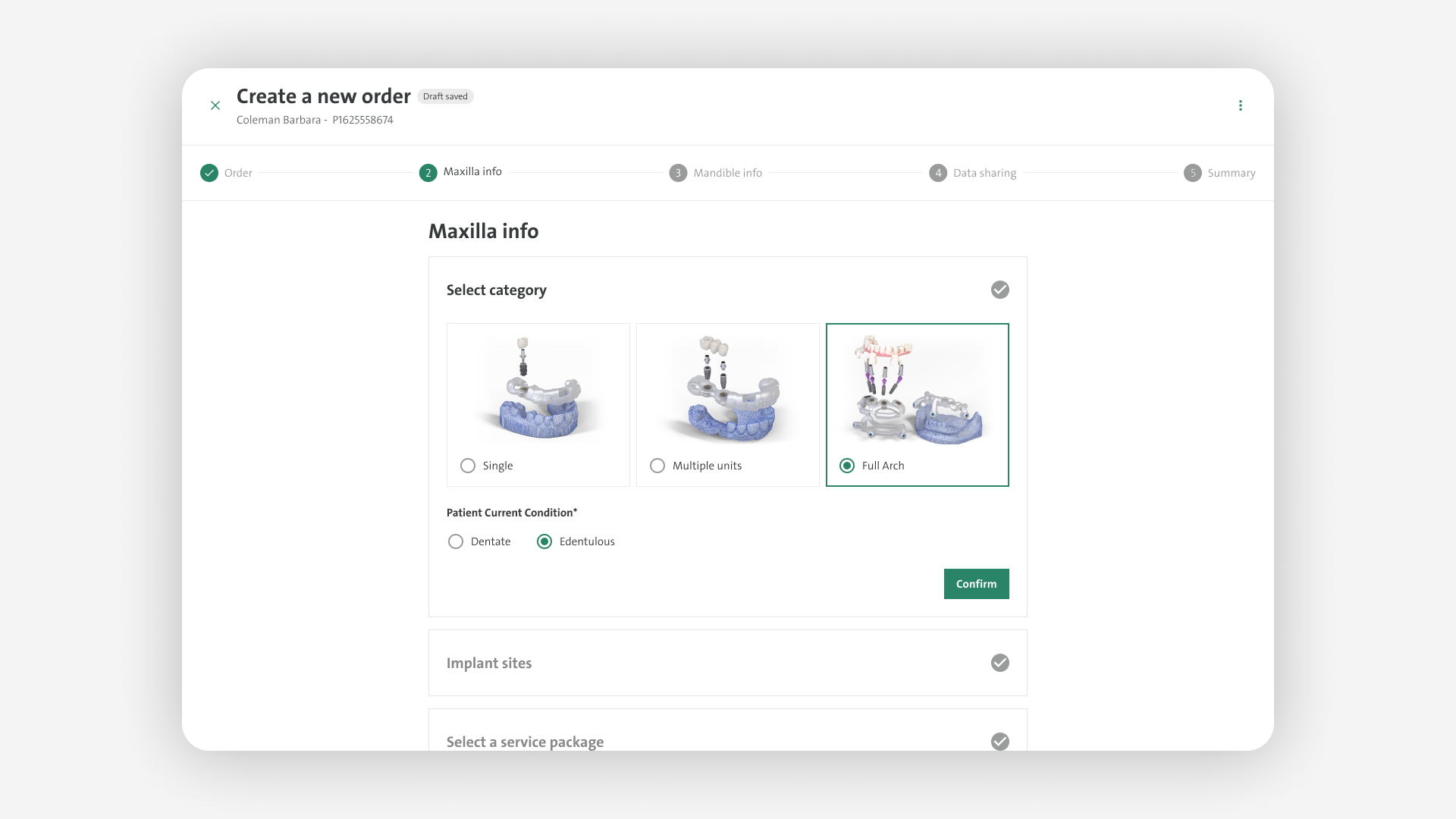
Enforce platform consistency among scrum teams
As the platform grew and the project scaled from 2 to 8 SCRUM teams, one of the most critical asset we could set up to ensure the platform scallability was a design system. Along the way, we've optimized our design & development process to ensure efficiency and quality. We implemented the following process :
- Assessment of the need for new component, ensuring the component is reusable, aligned with user needs and technically feasibility
- Prioritization of components to be developed for next sprint based on SCRUM teams needs
- Design of the component, including all variantion and technical specificaitons
- Development of the component, following design specifications
- Peer Review and QA to ensures the component works as expected and covers all specifications
- Deployment of approved components to the common library to make them available to all SCRUM teams
